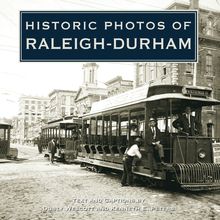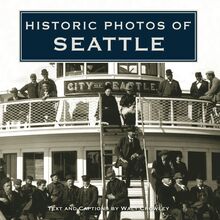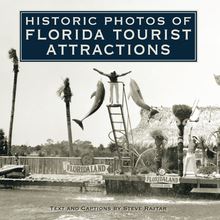Historic Photos of Houston , livre ebook
121
pages
English
Ebooks
2006
Vous pourrez modifier la taille du texte de cet ouvrage
Obtenez un accès à la bibliothèque pour le consulter en ligne En savoir plus
Découvre YouScribe en t'inscrivant gratuitement
Découvre YouScribe en t'inscrivant gratuitement
121
pages
English
Ebooks
2006
Vous pourrez modifier la taille du texte de cet ouvrage
Obtenez un accès à la bibliothèque pour le consulter en ligne En savoir plus
Publié par
Date de parution
01 décembre 2006
Nombre de lectures
0
EAN13
9781618586407
Langue
English
Poids de l'ouvrage
7 Mo
Publié par
Date de parution
01 décembre 2006
Nombre de lectures
0
EAN13
9781618586407
Langue
English
Poids de l'ouvrage
7 Mo
HISTORIC PHOTOS OF
HOUSTON
T EXT AND C APTIONS BY B ETTY T RAPP C HAPMAN
Farmers Market, built in 1928 on the present-day site of Wortham Theatre. The Gulf and Neils Esperson buildings still topped the skyline in the 1940s.
HISTORIC PHOTOS OF
HOUSTON
Turner Publishing Company
www.turnerpublishing.com
Copyright 2007 Turner Publishing Company
All rights reserved.
This book or any part thereof may not be reproduced or transmitted in any form or by any means, electronic or mechanical, including photocopying, recording, or by any information storage and retrieval system, without permission in writing from the publisher.
Library of Congress Control Number: 2006909503
ISBN 13: 978-1-59-652310-4
Printed in the United States of America
ISBN 978-1-68336-927-1 (hc)
C ONTENTS
A CKNOWLEDGMENTS
P REFACE
A C ITY P LANTS I TS R OOTS 1856-1899
A C ITY M ATURES 1900-1920
A C ITY ON THE M OVE 1921-1939
A C ITY C LIMBS TO N EW H EIGHTS 1940-1970
N OTES ON THE P HOTOGRAPHS
Harris County Courthouse, a unique Gothic-styled structure built in 1884 and razed in 1909.
A CKNOWLEDGMENTS
This volume, Historic Photos of Houston , is the result of the cooperation and efforts of many individuals and organizations. It is with great thanks that we acknowledge in particular the valuable contribution of the Houston Public Library-Houston Metropolitan Research Center.
We would also like to thank:
Betty Trapp Chapman, historian, for organizing, researching, and writing this history Joel Draut, archival photographer at the Houston Metropolitan Research Center Barfield Photography
P REFACE
Houston has thousands of historic photographs that reside in archives, both locally and nationally. This book began with the observation that, while those photographs are of great interest to many, they are not easily accessible. During a time when Houston is looking ahead and evaluating its future course, many people are asking, How do we treat the past? These decisions affect every aspect of the city-architecture, public spaces, commerce, infrastructure-and these, in turn, affect the way that people live their lives. This book seeks to provide easy access to a valuable, objective look into the history of Houston.
The power of photographs is that they are less subjective than words in their treatment of history. Although the photographer can make decisions regarding subject matter and how to capture and present it, photographs do not provide the breadth of interpretation that text does. For this reason, they offer an original, untainted perspective that allows the viewer to interpret and observe.
This project represents countless hours of review and research. The researchers and author have reviewed thousands of photographs in numerous archives. We greatly appreciate the generous assistance of the archivists listed in the acknowledgments of this work, without whom this project could not have been completed.
The goal in publishing this work is to provide broader access to this set of extraordinary photographs that seek to inspire, provide perspective, and evoke insight that might assist people who are responsible for determining Houston s future. In addition, the book seeks to preserve the past with adequate respect and reverence.
With the exception of touching up imperfections caused by the damage of time and cropping where necessary, no other changes have been made. The focus and clarity of many images is limited to the technology and the ability of the photographer at the time they were taken.
The work is divided into eras. Beginning with some of the earliest known photographs of Houston, the first section records photographs from before the Civil War through the end of the nineteenth century. The second section spans the first two decades of the twentieth century. Section Three moves from the 1920s to World War II. The last section covers the World War II era to the 1970s.
In each of these sections we have made an effort to capture various aspects of life through our selection of photographs. People, commerce, transportation, infrastructure, religious institutions, and educational institutions have been included to provide a broad perspective.
We encourage readers to reflect as they go walking in Houston, strolling through the city, its parks, and neighborhoods. It is the publisher s hope that in utilizing this work, longtime residents will learn something new and that new residents will gain a perspective on where Houston has been, so that each can contribute to its future.
Todd Bottorff, Publisher
The San Jacinto Bridge, seen here in 1894, was built in 1886 to connect downtown with the Fifth Ward on the north side of Buffalo Bayou.
A C ITY P LANTS I TS R OOTS
1856-1899
Two enterprising brothers from New York were lured to Texas in the 1830s by plentiful cheap land. When a new nation was established in 1836, Augustus and John Kirby Allen saw an opportunity to capitalize on that event by founding a town, which they predicted would become the great commercial emporium of all Texas. They selected land at the juncture of two bayous as the site for their speculative real estate venture. The fledgling entrepreneurs then named the town for the hero of the hour, Sam Houston, who would soon be elected president of the Republic of Texas. The town gained another advantage when it was named as the temporary capital of this new nation.
During the town s formative years, the greatest emphasis was placed on improving transportation facilities. On the eve of the Civil War, 350 miles of railroad track ran through Houston, and Buffalo Bayou had been dredged to a depth of 9 feet, allowing trade between Houston and Galveston. Cotton was the primary export, with timber of secondary importance. Befitting a trade center, the streets were filled with mercantile establishments. They also had their share of saloons.
Since Houston was distant from the Civil War battlefields, it suffered little physical deterioration. The demand for wartime goods actually stimulated factory production. Thus, by the end of the war, the city s industrial base had greatly expanded.
By the mid 1870s, Houston was a well-established commercial center with a network of railroads and a navigable waterway. It had grown in population and witnessed the decline of yellow fever. Although city government was dominated by white businessmen, the Reconstruction era saw a number of African Americans placed in positions of leadership.
The latter part of the nineteenth century was a period of transition for the city. Having established some prominence in the business arena, leaders began to address amenities that had largely been ignored. Trained architects began to design handsome structures, both public and private. A public school system was established in 1876; the first general hospital opened in 1887; an elegant opera house was built in 1890; and attempts were made to lessen the ever-present mud and dust by surfacing the streets.
By the end of the century, Houston was positioned to become a major force along the Gulf Coast.
The earliest known photograph of Houston shows the 300 block of Main Street, 1856.
The 300 block of Main Street, 1866, after it was rebuilt following a fire. The Morris Building was Houston s first four-story structure.
The sternwheeler St. Clair , loading cotton at the foot of Main Street shortly after the Civil War.
Volkfest parade, an annual celebration held by the city s German residents, 1870s.
Capitol Hotel, occupying the former Capitol of the Republic of Texas at the corner of Main and Texas, ca. 1870.
Market House, which held the farmers market, offices of city government, the telephone exchange, and a circulating library until it was destroyed by fire in 1901.
Harris County Jail, 1879.
The Jedidiah Porter Waldo home, built in 1884-85 on Rusk Avenue and later moved to the Westmoreland Addition where it was redesigned by the family.
Cotton Exchange and Board of Trade, 202 Travis, 1884. Note the zinc cotton bale, which served as a weather vane on top of the building.
The city s first telephone exchange, 1887.
U.S. Post Office, 1888, designed by a U.S. Treasury Department architect who thought this Moorish styling was appropriate for Houston s warm climate.
The Henry Sampson home on Preston Avenue across from Courthouse Square.
St. Joseph s Infirmary was founded in this building by the Sisters of Charity of the Incarnate Word in 1887. When it burned, the hospital (now St. Joseph Medical Center) was moved to the site it occupies today.
Grand Central Station, frequently called the finest in the South, was built on Washington Avenue in 1887. The downtown post office occupies the site today.
Christ Episcopal Church, ca. 1890.
Volunteer firemen with their horse-drawn service truck, ca. 1890.
The Houston Electric Railway Company initiated service on tracks, which extended from downtown to the South End, June 12, 1891.
Heights Boulevard in Houston Heights, the first suburban development, 1890s.
The N. L. Mills home, one of the first houses built on Heights Boulevard.
Kiam s clothing store, the first building in the city with an electric passenger elevator, 1893.
East side of Main Street looking north from Prairie Avenue, 1894.
Flat cars loaded with cotton at Grand Central Station, 1894.
Bayou City Cotton Compress, 1890s. As cotton was received from the interior, it was compressed, sent down chutes to barges on the bayou, and then carried to ocean-bound vessels in Galveston.
First Presbyterian Church, considered one of the most beautiful church interiors in the South when it was built in 1894.
A view looking east from the Market House tower, 1894. The tower of the Harris County Courthouse is seen in the distance.
Wall and Stabe Undertakers, corner of Prairie and San Jacinto, 1895.
A record twenty-two inches of snow fell on February 14 and 15, 1895














